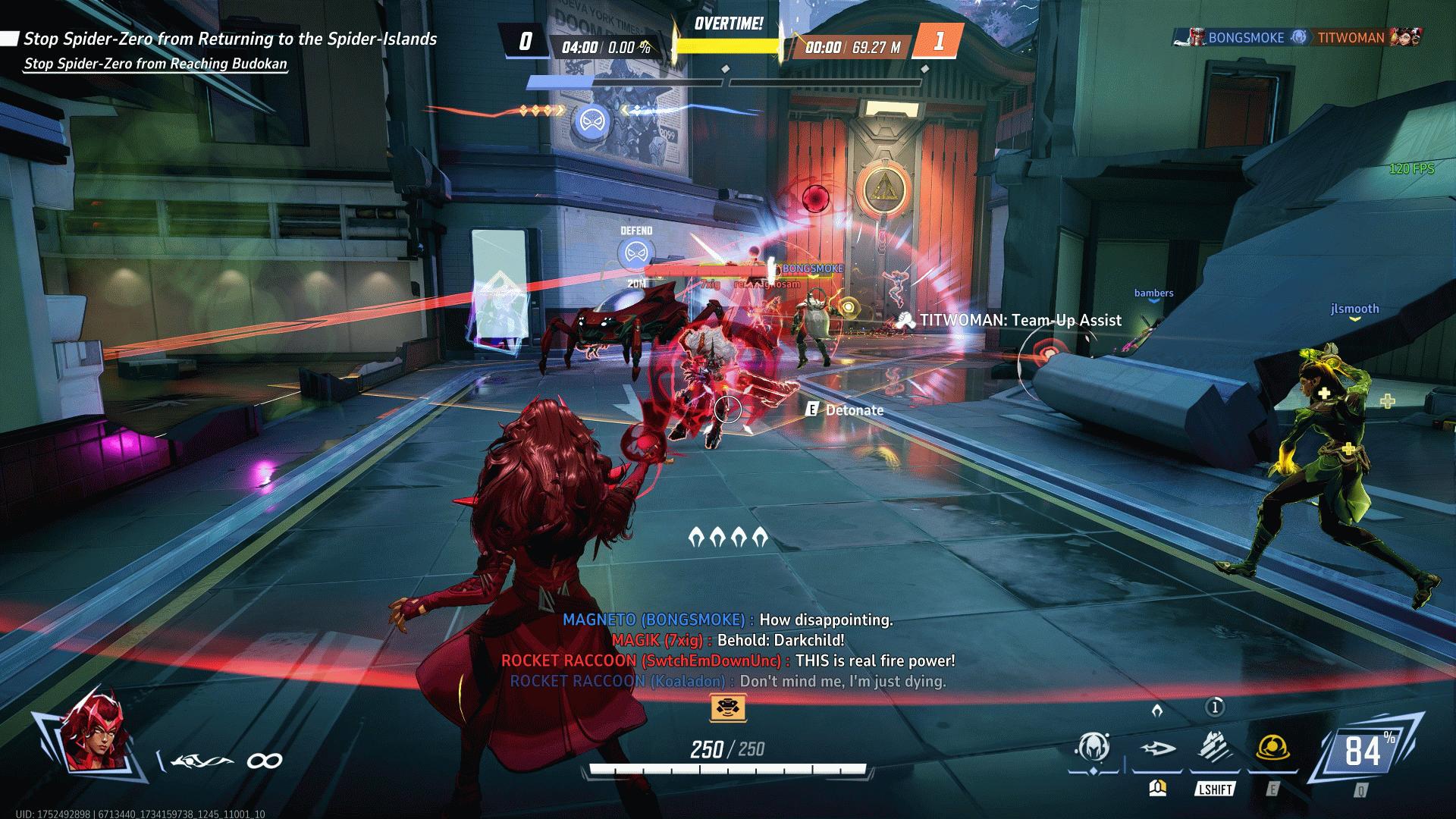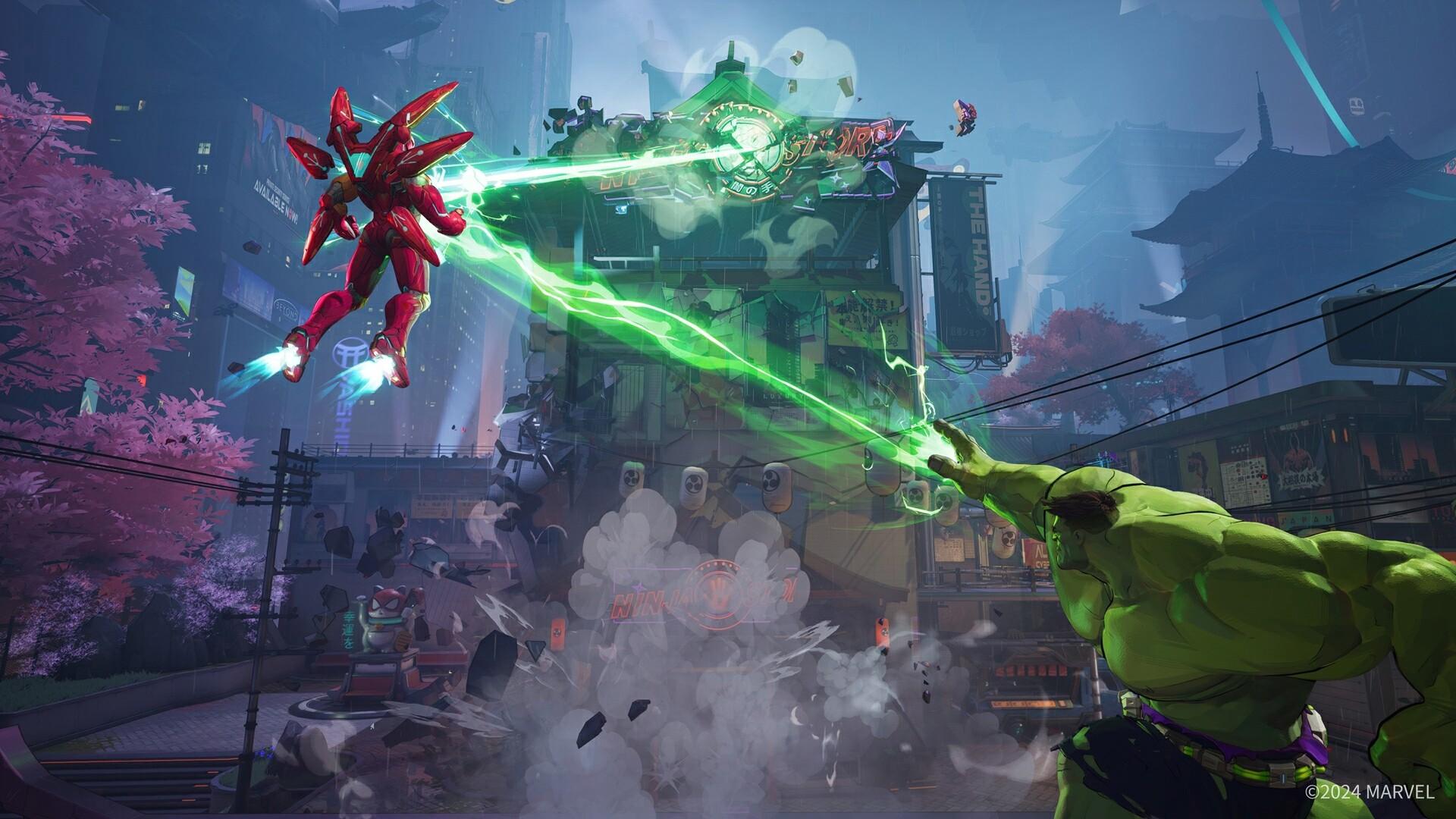
by
Daniel Parker
, posted 1 hour ago / 205 Views
Marvel Rivals, the latest addition to the hero shooter genre, shines with its polished gameplay and well-thought-out design. Clearly inspired by Overwatch, which NetEase previously published in China until its partnership with Activision-Blizzard ended in 2023, Marvel Rivals stands above the rest in the genre, being able to innovate while alleviating some frustrating design decisions found in other games.
Many recent hero shooters, like Apex Legends and the recently-cancelled Concord, suffer from uninteresting characters, often modeled after everyday people or self-inserts of developers. While the intention behind these characters is commendable, they often feel limited in scope. In contrast, Marvel Rivals boasts a robust roster of iconic characters such as Dr. Strange, Hulk, Scarlet Witch, and Hela. These larger-than-life heroes bring a timeless appeal.
Gameplay wise, Marvel Rivals borrows heavily from Overwatch, including character archetypes, game modes, and hero abilities. However, NetEase has addressed some long-standing issues from Overwatch’s history. For example, Overwatch’s 2-2-2 and later 1-2-2 formats restricted team compositions. This was due to another issue: Activision-Blizzard not being able to balance the game properly, while creating a new hero, Brigitte, who was intended to be a tank-like character in the support role, leading to the forming of the “GOATS” meta. To avoid such an issue, Marvel Rivals introduces hero bans in diamond rank and above. While it’s not the way I would have wanted it – there’s more than one way to fix the issue of a single character disrupting the entire balance of the game – at least it’s something that actually addresses the issue.
The ranking system in Marvel Rivals is also a significant improvement over anything Overwatch has done over the last nine years. After a certain number of losses, players receive protection from dropping further in rank for one game. However, if they drop to a previous rank entirely, they descend to the middle of that rank, unlike Overwatch, which will secretly track competitive points during rank protections and results in double point losses when it claims you’re protected. This transparency makes ranked play less stressful.

Outside of ranked modes, cross-play is enabled, but the game feels different if you’re running it on PC. Mouse and keyboard users have a significant advantage over controller players, and a known bug grants certain heroes buffs at higher framerates. For instance, Dr. Strange gains new combo routes above 240 FPS, Wolverine and Starlord deal more damage above 120 FPS, and Venom’s wall-traversal speed increases. All this aside, though, once you’re in a lobby of all PC users, cover and ability management will play a much greater role as opponents will be much faster and more accurate with their shots. For me personally, going into ranked early on was extremely jarring. However this was also because even the best players at that point were only gold rank.
To help sort out who should and shouldn’t be on your team, however, is a very useful indicator within the versus screen; players can see each other’s loading progress, so expect to be avoided if your game is taking significantly longer to load than the rest of the lobby. Furthermore, if the game has to be cancelled because of a failure-to-load, punishments and potential suspensions will be issued to the offending players. Another crucial aspect of Marvel Rivals’ competitive play is how it handles leavers. If a player leaves within the first 10 seconds of a match, the game is cancelled, preventing one-sided matches – another magnificent change compared to Overwatch, as missing a teammate guarantees the match will be lost in nearly every instance.
What makes Marvel Rivals so great is that the developers clearly knew what ideas to implement based on their history with Overwatch. Not only that, but it looks great as well. Unlike Overwatch, environments are scaled properly. The entire game itself looks and feels like a living comic. There are even destructible elements within the maps, and those too look great because they’re not key-framed animation sequences.

The only key area where Marvel Rivals doesn’t excel in is map variety. This is obviously because the game is still new. But for Marvel Rivals to release in the state it has, it’s proven that it could have the staying power of a title like Overwatch and, eventually, we’ll see not only more maps but new characters introduced as well.
Another aspect of the game I wasn’t particularly fond of were the seasonal buffs some characters get, such as Hela’s 20% damage boost. The damage boost is already too high – that’s why the character, along with Hawkeye, is the most commonly banned one. Overwatch 2 does the same thing, without putting a spotlight on the overpowered character. It’s as if Marvel Rivals is saying, “we know this character is overpowered, and this is who we’ve chosen to ruin your matches for the rest of the season if you don’t ban them.” Overwatch 2 seemingly introduces character buffs out of incompetence, but with these seasonal buffs, Marvel Rivals intentionally buffs characters for no good reason.
In contrast, there are also team-up abilities within the game to encourage specific characters on a team, but these are more considered. They vary from character to character, but to give two examples: Hulk can throw an allied Wolverine into the enemy team as a unique attack, while Magneto will gain access to a more powerful melee attack with Scarlet Witch on his team. It’s very creative, and a unique element that helps encourage players to try out new characters.

All praise aside, however, I won’t be switching to Marvel Rivals long term. Yes, I believe it’s the better game, but the issue comes back to battle passes, skins, and monetization. There are simply too many games charging $20 or more for a singular skin. A big draw for games like this is the collecting aspect, however this is being done by so many different games, and out all of them that I currently collect for only Tekken 8 sells clothing items in a consumer-friendly way that can be applied to multiple characters and which feature robust color options using a color wheel, plus its item sets are under $5 each (and sometimes less, if there’s an active sale).
NetEase clearly has the ability to innovate; it’s done so through various aspects of the game, battle pass included. So why not with the item shop itself? Not having to purchase recolored items, because we could simply change them to whatever color we chose, would have been a great feature on its own.

Despite being rivals, I feel as though both Marvel Rivals and Overwatch 2 can co-exist. One isn’t going to make the other obsolete, but will hopefully instead provide healthy competition which will make both games better in the end. That, ultimately, would be to everyone’s benefit. So far, Marvel Rivals has shaken up the hero shooter genre with its near-perfect blend of visuals and gameplay, while scrapping many of the failed ideas pushed by its competition, leading to an overall great experience.
This review is based on a digital copy of Marvel Rivals for the PC
More Articles